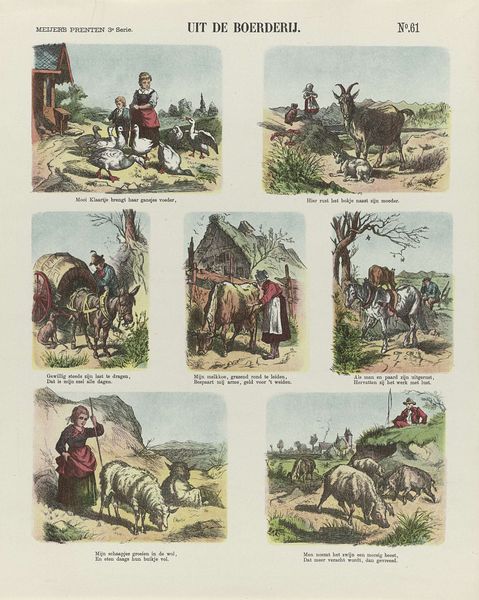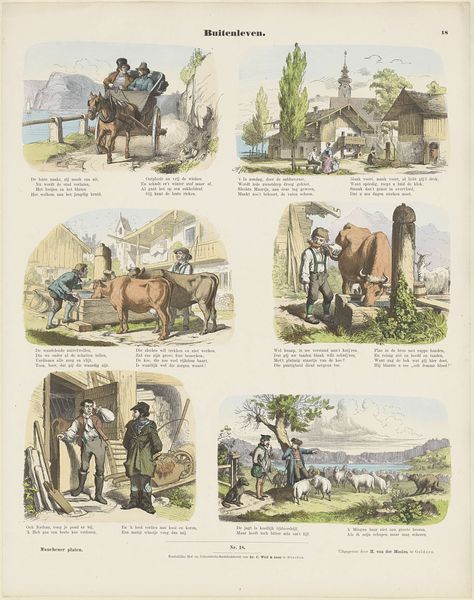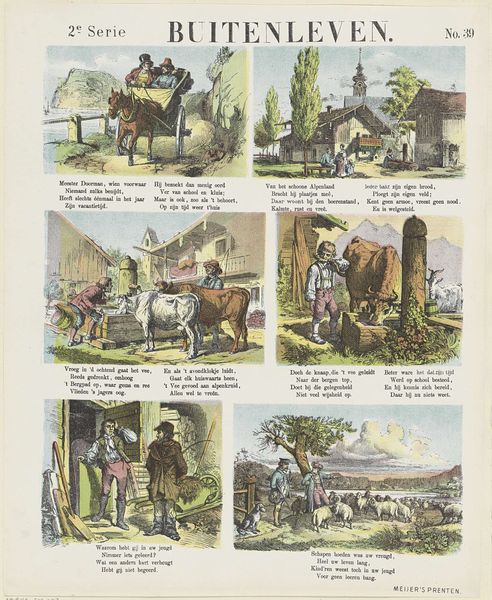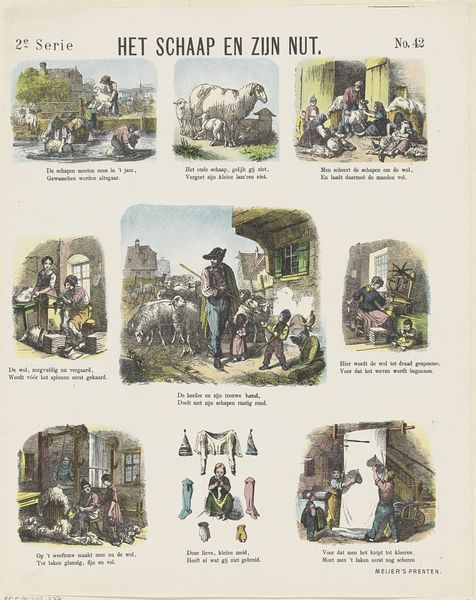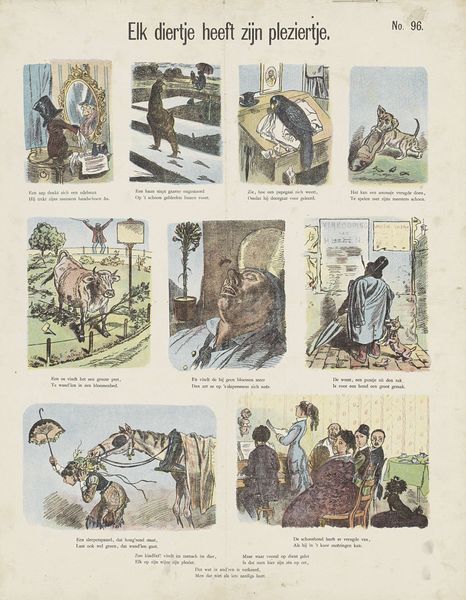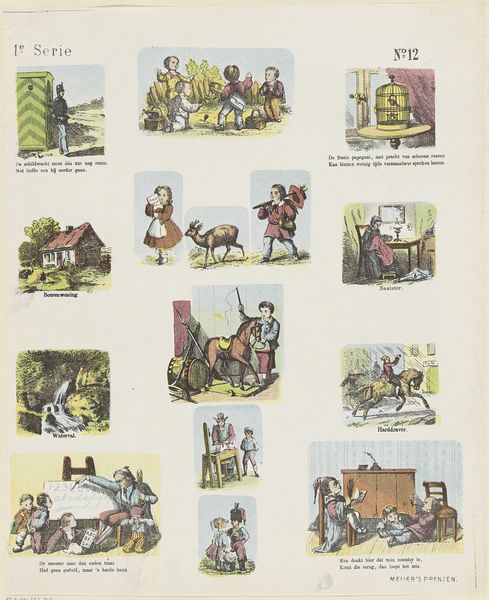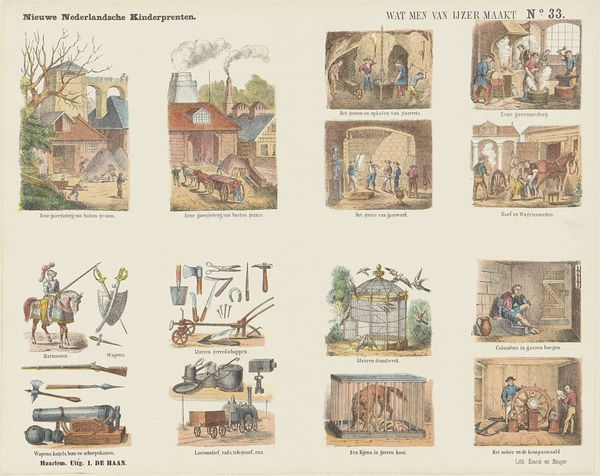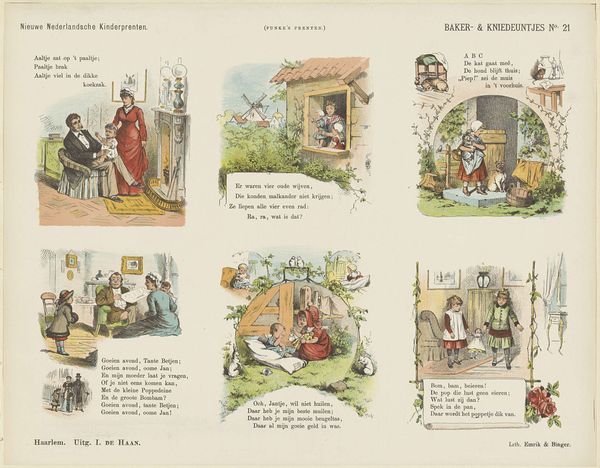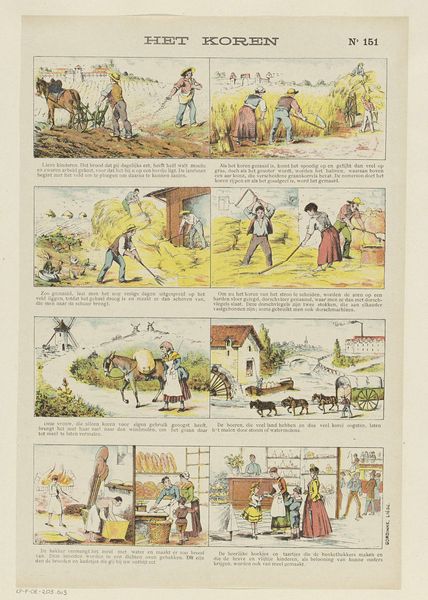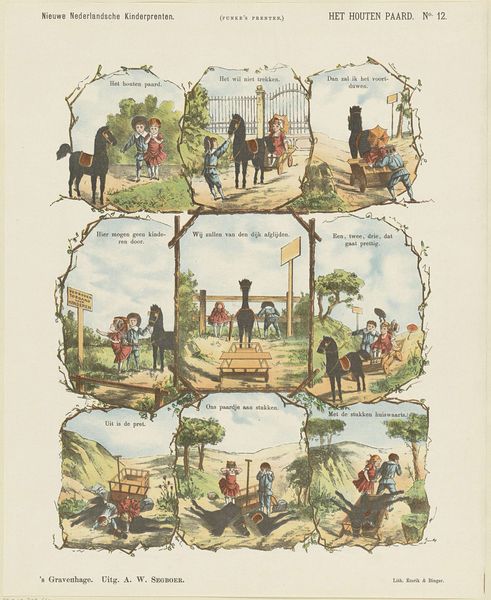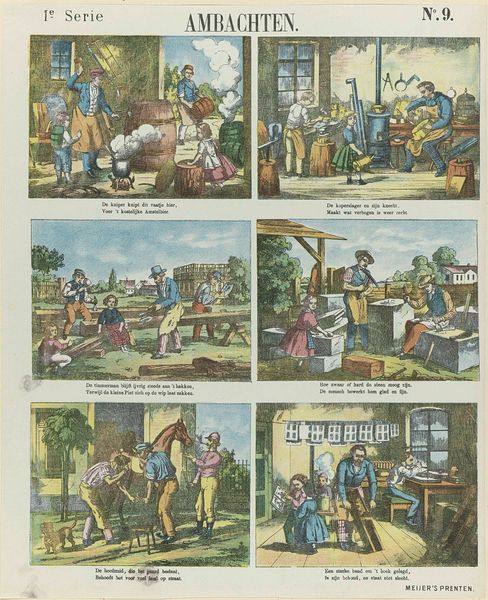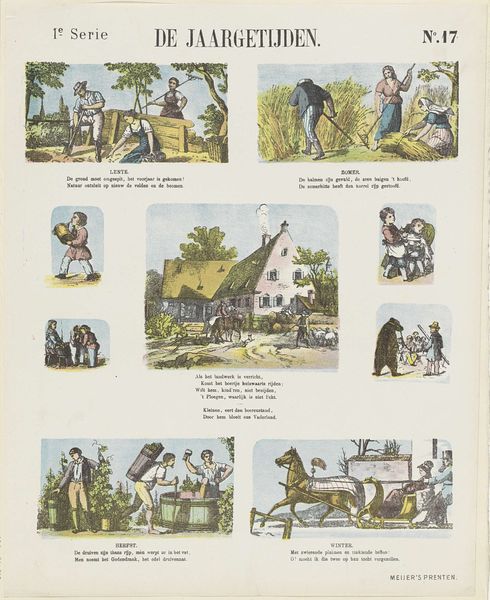
# print
#
landscape
#
folk-art
#
genre-painting
#
realism
Dimensions: height 429 mm, width 341 mm
Copyright: Rijks Museum: Open Domain
Editor: This is "Uit de boerderij," or "From the Farm," an 1881 print by De Ruyter & Meijer. It’s a charming collection of scenes – very pastoral, but in a rigidly organized way. What historical context do you think shaped how this kind of imagery was made and received? Curator: It’s fascinating how these seemingly innocent genre scenes are presented, isn't it? These idealized images of rural life emerged during a period of rapid industrialization and urbanization. It presents a sanitized version of the countryside, carefully curated to evoke nostalgia. Do you think it challenges or reinforces class divisions? Editor: I suppose it reinforces them by sentimentalizing rural life. Is there also perhaps an ethnic and gendered lens to use here, a social element at work with this “perfect world” vision? Curator: Absolutely! Who is present and who is absent in these images? Where are the migrant workers, the landless laborers, the complexities of labor that sustained these idealized farm settings? These images are selling a particular vision of the nation, one that prioritizes stability and tradition, potentially obscuring other experiences. Can we consider it to be propaganda, of a soft kind? Editor: It seems a bit like selective memory. What strikes me is how easily such selective memory can be visually appealing and how we respond to it still today. Curator: Precisely. Consider how such romanticized views of the countryside contribute to our understanding of national identity and power. Recognizing that visual appeal, allows for deeper questioning of social construction and challenges to our assumptions. It might seem to only evoke nostalgia, but there’s something more insiduous lurking beneath the surface of these cute barnyard animals! Editor: I hadn't considered the ways these images might be doing more than representing rural life; now I see that they participate in bigger historical and political issues.
Comments
No comments
Be the first to comment and join the conversation on the ultimate creative platform.
